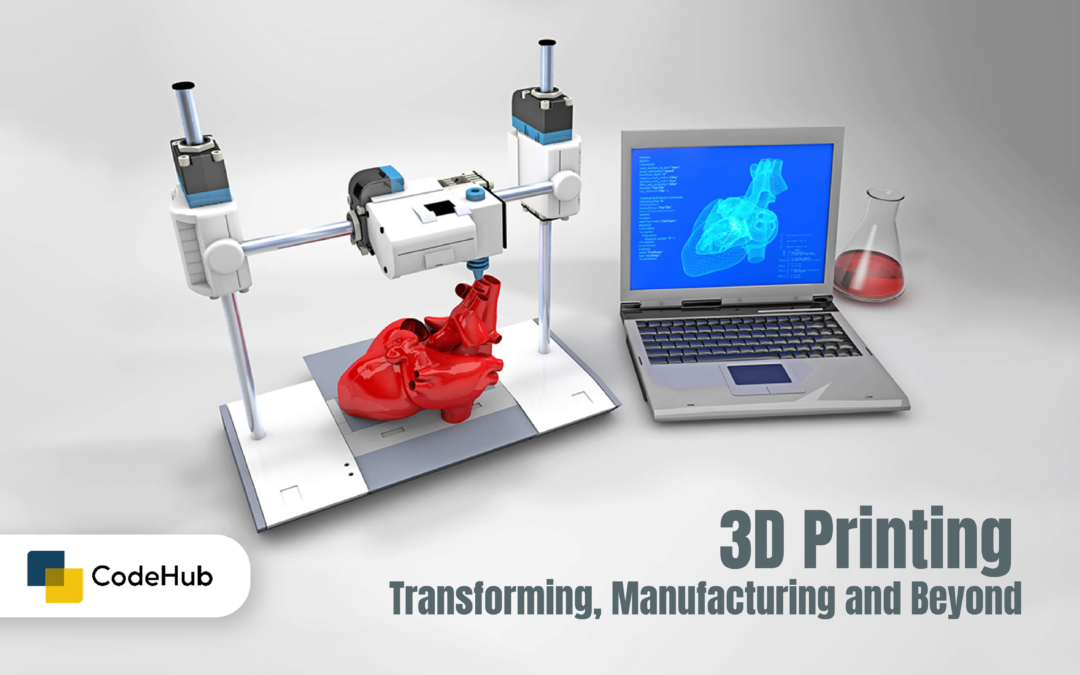Introduction
In recent years, 3D printing has emerged as a transformative technology, revolutionizing manufacturing and impacting various industries from healthcare to aerospace. This innovative process, also known as additive manufacturing, involves creating three-dimensional objects layer by layer from digital models. Its ability to produce complex designs with precision and efficiency has made it a game-changer in the modern industrial landscape.
The Basics of 3D Printing
3D printing starts with a digital design, often created using computer-aided design (CAD) software. This digital model is then sliced into thin layers, which the 3D printer reads to build the object layer by layer. There are several types of 3D printing technologies, each with its unique method and material compatibility:
1. Fused Deposition Modeling (FDM: This is the most common type of 3D printing, where thermoplastic materials are heated and extruded through a nozzle to form each layer.
2. Stereolithography (SLA): SLA uses a laser to cure liquid resin into solid plastic in a layer-by-layer process.
3. Selective Laser Sintering (SLS): This technique uses a laser to fuse powdered material, typically plastic or metal, into solid objects.
4. Digital Light Processing (DLP): Similar to SLA, DLP uses a digital light projector to cure resin, allowing for faster printing times.
5. Metal Additive Manufacturing: Techniques like Direct Metal Laser Sintering (DMLS) and Electron Beam Melting (EBM) are used for producing metal parts with high precision and strength.
Applications of 3D Printing
1. Healthcare:
– Prosthetics and Implants: Customized prosthetics and implants can be produced quickly and cost-effectively, tailored to the specific needs of patients.
– Surgical Tools and Models: Surgeons use 3D-printed models of organs and tissues for pre-surgical planning and practice, enhancing precision and outcomes.
2. Aerospace:
– Lightweight Components: 3D printing allows for the creation of lightweight yet strong components, improving fuel efficiency and performance in aircraft and spacecraft.
– Rapid Prototyping: Engineers can quickly produce and test prototypes, accelerating the development cycle of new aerospace technologies.
3. Automotive:
– Customized Parts: Automakers use 3D printing to produce custom parts and accessories, enhancing vehicle performance and aesthetics.
– Tooling and Jigs: The technology is used to create custom tooling and jigs, streamlining the manufacturing process and reducing costs.
4. Consumer Products:
– Customization and Personalization: From jewelry to home décor, 3D printing enables the production of unique, customized products that cater to individual preferences.
– Rapid Manufacturing: Small businesses and startups leverage 3D printing to produce products quickly and economically, reducing time-to-market.
Benefits of 3D Printing
1. Cost Efficiency: By reducing material waste and eliminating the need for expensive molds and tooling, 3D printing lowers production costs.
2. Speed: Rapid prototyping and on-demand manufacturing significantly cut down development and production times.
3. Customization: The ability to produce bespoke items tailored to specific requirements is a significant advantage, particularly in healthcare and consumer goods.
4. Complexity: 3D printing can produce complex geometries and intricate designs that would be impossible or impractical with traditional manufacturing methods.
Challenges and Future Prospects
Despite its advantages, 3D printing faces several challenges. Material limitations, production speed for mass manufacturing, and post-processing requirements are areas that need improvement. However, ongoing research and development are addressing these issues, paving the way for broader adoption.
The future of 3D printing looks promising, with advancements in material science, printer technology, and software. Emerging trends include multi-material printing, larger-scale applications, and integration with other technologies like artificial intelligence and the Internet of Things (IoT).
Conclusion
3D printing is undoubtedly reshaping the manufacturing landscape, offering unprecedented opportunities for innovation, efficiency, and customization. As the technology continues to evolve, its impact will extend beyond traditional manufacturing, influencing various sectors and driving the next wave of industrial revolution. Embracing 3D printing today can provide businesses with a competitive edge, enabling them to stay ahead in an increasingly dynamic and technology-driven world.

